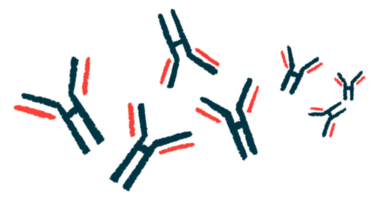Brain macrophages play key role in triggering Parkinson’s inflammation
Research sheds light on how alpha-synuclein protein drives disease

A group of immune cells called border-associated macrophages, or BAMs, have a central role in driving inflammation in the brain in Parkinson’s disease, a new study reports.
“The results point to a critical role for BAMs in neuroinflammatory responses and highlight the need for disease-modifying therapeutic targeting of BAMs in neurodegenerative disease,” Ashley Harms, PhD, co-author of the study at the University of Alabama at Birmingham, said in a news release.
The study, “Border-associated macrophages mediate the neuroinflammatory response in an alpha-synuclein model of Parkinson disease,” was published in Nature Communications.
A feature of Parkinson’s disease is the toxic aggregation, or clumping, of the alpha-synuclein protein inside the brain, which is thought to play a role in driving the disease.
It’s long been established that these protein clumps can induce inflammation in the brain, which contributes to the nerve damage that leads to Parkinson’s. Exactly how the clumps trigger inflammation isn’t fully understood, however.
Role of BAMs in inflammation
Here, scientists learned through tests on a mouse model of Parkinson’s that the process depends on BAMs. The immune cells are called “border-associated” because they’re normally found around the edges of blood cells in the brain. They’re sometimes called central nervous system-resident macrophages, or CRMs, since they live in the brain.
The term “macrophage” comes from Greek words that translate into “big eater” and they are capable of gobbling up potential threats like viruses, bacteria, or pieces of cancer cells. After eating a potential threat, macrophages can interact with other immune cells, most notably T-cells, to trigger a potent inflammatory reaction.
When the researchers engineered mice so their BAMs lacked a critical protein needed to activate T-cells, alpha-synuclein induced far less inflammation and the mice lost fewer dopaminergic neurons, the dopamine-making nerve cells whose dysfunction causes most Parkinson’s symptoms.
Microglia, another type of brain immune cell, are also able to eat potential threats and activate T-cells, and it’s long been assumed that microglia play important roles in driving Parkinson’s inflammation. To the researchers’ surprise, however, they found that engineering microglia in a similar way didn’t reduce inflammation.
“Our study indicates that BAMs, not microglia, specifically mediate neuroinflammation in response to” alpha-synuclein, the researchers said. “These findings emphasize the importance of future research on the unique roles these subsets of macrophages may play in both the innate immune response to aggregated proteins as well as any potential disease specific processes including neuronal dysfunction and neurodegeneration.”
Since the experiments were done in mice, the researchers analyzed brain tissue from people with Parkinson’s. BAMs were found to be closely associated with T-cells, mirroring what was observed in the mouse model and “indicating a disease-associated interaction similar to that observed in mice,” Harms said. The finding change the “classical understanding of neuroinflammatory mechanisms in neurodegenerative disease, as they implicate unique and nonredundant functions for BAMs” in brain inflammation, she said.
Examining in more detail the biological processes by which alpha-synuclein clumps cause macrophages to become activated to trigger inflammation is needed, the scientists said, noting understanding these processes better may offer new therapeutic strategies.







